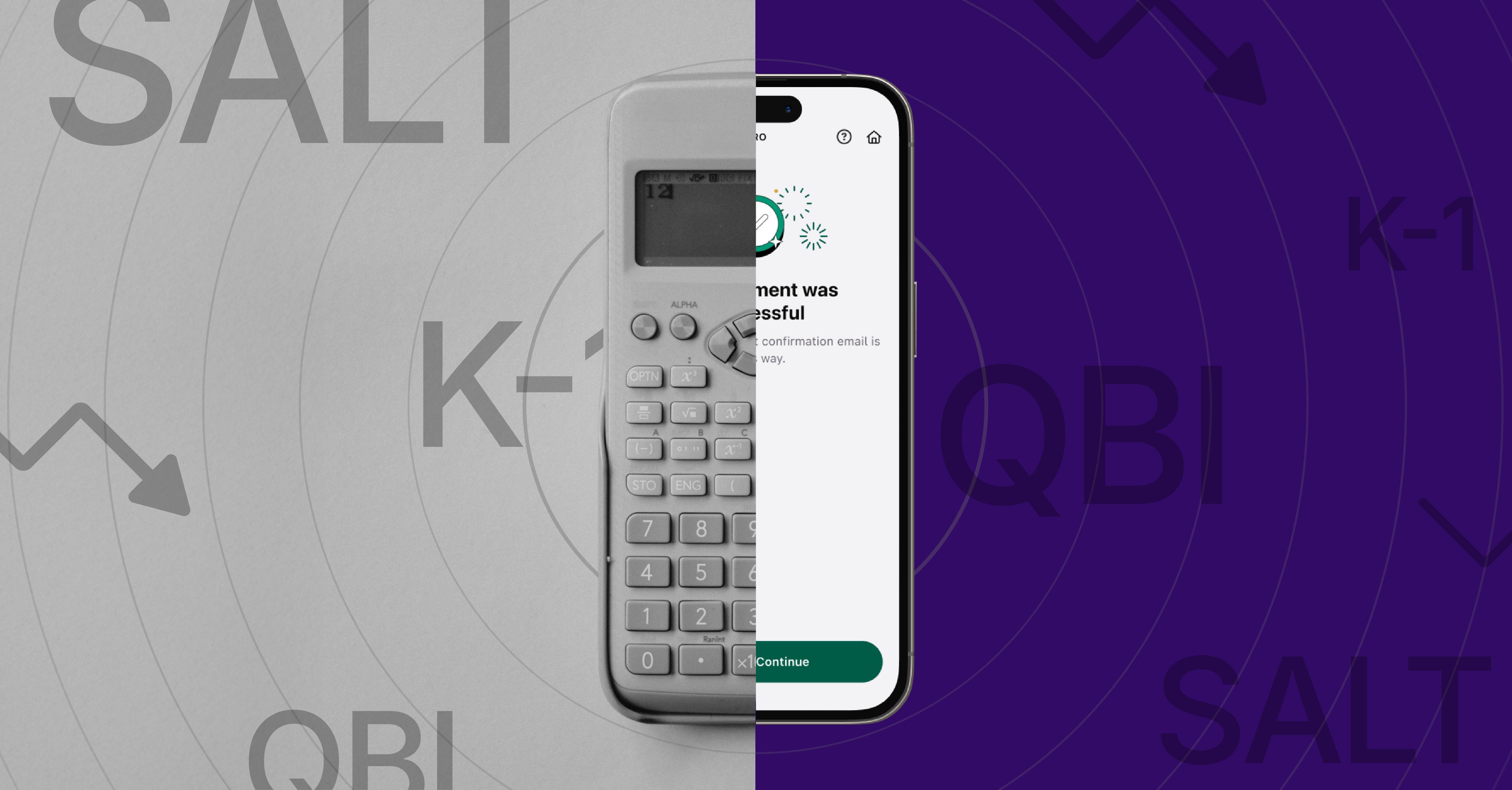Pill Text
Pill Text
Pill Text
Pill Text

The IRS adjusted tax rates due to inflation, effectively leading to lower tax rates and increased deductions, tax credits (e.g. EITC), pre-tax contributions (e.g. FSAs and HSAs), and gift exclusions. While all taxpayers can take advantage, those that most diligently plan ahead can benefit the most.
The landscape of tax regulations is always evolving, and this year is no exception. As we look forward to the 2024 tax season, let's look back and understand how the landscape has shifted from last year. Tax laws are like shifting sands, constantly evolving with the economic and political climate.
This year, we're seeing a mix of increases in deductions, adjustments in tax rates, and the introduction of new taxes, each of which may impact your tax filing and potential returns. We want to make these changes easy to digest and help you plan your taxes effectively. From increased deductions to revised tax rates, here's a breakdown of the key changes to help you easily navigate this year's tax filing.
Summary
The IRS adjusted tax rates brackets, credits, contributions, and deductions due to inflation. Here’s a quick summary of how the changes impacted you. Read on for more information and various scenarios.
- For everyone, tax brackets increased meaning that income is overall taxed at lower rates. That likely means a larger refund for most taxpayers.
- For those taking the standard deduction, taxable income was lowered by $750 for individuals and $1,500 for married couples.
- For families with three or more children that qualify for the earned income tax credit, the maximum credit increased to $7,830.
- For employees contributing to Flexible Spending Accounts (FSAs), the contribution maximum reached $3,200 with the ability to carryover $640. That’s more pre-tax money that can be applied to eligible healthcare expenses.
- For seniors with high-deductible plans, inflation-adjusted increases to deductible and out-of-pocket limits could lead to higher medical expenses.
- For taxpayers working abroad, the foreign income exclusion increased, offering more tax relief.
- For those receiving an inheritance or giving gifts, increases to tax exemptions is good news for estate planning.
- For those with adopted children, the maximum credit for adoption-related expenses has risen, offsetting costs including those related to the adoption process.
Higher standard deduction means more money in your pocket
Here's some good news. The standard deduction, which lowers your taxable income, has increased across the board. Married couples filing jointly will see a rise to $29,200, up by $1,500 from last year. Single taxpayers and married individuals filing separately now have a deduction of $14,600, an increase of $750. For heads of households, the deduction is up to $21,900, which is $1,100 more than last year. These increases provide a bit more financial relief by reducing your taxable income.
Adjustments in tax brackets
In the US, we use a "marginal tax brackets" system to determine how much tax you'll pay. Think of your annual income as being split into several portions, with each portion falling into a different tax bracket. Each bracket has its own tax rate.
Here's how it works: The first portion of your income is taxed at the lowest rate. As you earn more, each additional portion of your income gets taxed at a progressively higher rate. But, and here's the crucial part: only the income that falls within a specific bracket gets taxed at that bracket's rate.
This system ensures that everyone pays their fair share of taxes. If your income increases and pushes you into a higher bracket, only the income above the previous bracket's threshold is taxed at a higher rate. Your lower earnings remain taxed at the lower rates. It's a progressive approach, ensuring that the more you earn, the more you contribute, but in a balanced and equitable way.
The tax brackets have been tweaked this year. The top rate remains at 37% for the highest earners, but the income thresholds have changed. For example, single taxpayers will now hit this top rate at incomes over $609,350, compared to a lower point last year. These adjustments affect different income levels; here are a few examples of how it plays out based on how much someone might earn.
Scenario 1: Single taxpayer earning $65,000
- Tax Brackets Applied:
- 10% on the first $11,600 of income = $1,160
- 12% on the income between $11,601 and $47,150 = $4,266 (12% of $35,550)
- 22% on the income between $47,151 and $65,000 = $3,927 (22% of $17,850)
- Total Tax Due: $9,353
- In this scenario, the taxpayer's highest tax rate is 22%, applied to the portion of their income above $47,150 but not exceeding $65,000. The taxpayer does not reach the higher tax brackets.
Scenario 2: Single taxpayer earning $180,000
- Tax Brackets Applied:
- 10% on the first $11,600 = $1,160
- 12% on the income between $11,601 and $47,150 = $4,266
- 22% on the income between $47,151 and $100,525 = $11,742 (22% of $53,375)
- 24% on the income between $100,526 and $180,000 = $19,074 (24% of $79,475)
- Total Tax Due: $36,242
- In this scenario, the taxpayer's income places them in the 24% tax bracket for their highest portion of income. They do not reach the 32% tax bracket, which starts at incomes over $191,950 for single filers in 2024.
Scenario 3: Single taxpayer earning $650,000
- Tax Brackets Applied:
- 10% on the first $11,600 = $1,160
- 12% on the income between $11,601 and $47,150 = $4,266
- 22% on the income between $47,151 and $100,525 = $11,742
- 24% on the income between $100,526 and $201,050 = $24,126
- 32% on the income between $201,051 and $383,900 = $58,432
- 35% on the income between $383,901 and $609,350 = $79,007.50
- 37% on the income over $609,350 = $15,010.50 (37% of $40,650)
- Total Tax Due: $193,744
- For the second scenario, the taxpayer's income places them in the 24% tax bracket for their highest portion of income. They do not reach the 32% tax bracket, which starts at incomes over $191,950 for single filers in 2024.
These examples demonstrate how progressive tax brackets work in the United States. Each portion of income is taxed at the rate corresponding to its bracket. Remember, these scenarios do not consider other tax factors, such as deductions or credits that might lower the overall tax bill.
Expanded insights 2024 tax credits and benefits
Several updates and enhancements in tax credits and benefits have been introduced, which could significantly impact your financial planning and tax filings. From an increase in the Earned Income Tax Credit (EITC) to adjustments in health savings plans and more generous tax exclusions, these changes are designed to provide greater financial relief and support to a wide range of taxpayers. In this section, we'll explore these changes in detail, offering examples to illustrate how they might apply to different scenarios. Remember, individual circumstances vary, so consider consulting a tax professional for advice tailored to your situation.
1. Earned Income Tax Credit (EITC) increase
- What's New: The EITC for families with three or more qualifying children has increased to $7,830.
- Example: Consider a single parent with three children earning $30,000 annually. Last year, they might have received less in EITC. With the increase this year, they could potentially receive an additional $400, boosting their overall tax refund and providing more financial support.
2. Health Flexible Spending Arrangements (FSA) adjustments
- What's New: The cap for employee contributions to health FSAs is now $3,200, and the carryover amount is up to $640.
- Example: Suppose you're planning to undergo a medical procedure next year. You can now contribute up to $3,200 to your FSA to cover this expense tax-free. If you use only some of it this year, up to $640 can be carried over to the next year, reducing the risk of losing unused funds.
3. Changes in Medical Savings Account (MSA) parameters
- What's New: There are now higher deductibles and out-of-pocket limits for both self-only and family coverage.
- Example: If you have a self-only MSA, your minimum annual deductible is now $2,800 (up by $150). You'll pay out-of-pocket if your medical expenses don't exceed this amount. However, the maximum out-of-pocket expense limit is also increased, offering a safety net if your medical costs unexpectedly surge.
4. Increased Foreign Earned Income Exclusion
- What's New: The exclusion amount is raised to $126,500, offering more tax relief for those working abroad.
- Example: If you're an expatriate working in another country and earn $125,000, you can now exclude your entire income from U.S. taxes, compared to $120,000 last year, potentially saving you from higher tax liabilities.
5. Enhanced Estate Tax Exemptions and Gift Exclusions
- What's New: There's an increase in estate tax exemptions and annual gift exclusions, aiding in estate planning.
- Example: If you inherit an estate from a relative who passed away in 2024, the first $13,610,000 of the estate is exempt from federal taxes, up from last year. For gifts, you can now give up to $18,000 per year to an individual without incurring gift tax, an increase beneficial for those planning to pass wealth to family members or friends.
6. Raised Adoption Credit Maximum
- What's New: The maximum credit for adoption-related expenses has risen.
- Example: If you're adopting a child this year, you can claim up to $16,810 in expenses (up from $15,950 last year). This increase can help offset the often substantial costs associated with the adoption process.
- Understanding these changes can significantly affect how you plan your finances and approach your tax filings. Personal circumstances can vary widely, so it's advisable to consult with a tax professional to see how these specific changes apply to your situation.
Compared to last year, these changes could impact your tax calculations and potential refunds. Being aware of these adjustments as you prepare your tax returns is crucial. If you need clarification on how these changes apply to you, consulting with a tax professional is wise. Stay informed and plan accordingly to make the most of your tax situation this year.
This content is provided for informational purposes only and should not be construed as tax, legal, financial, accounting, or other advice. Rules and regulations vary by location and are subject to change, so please consult with an expert if you need advice specific to you.
Any third-party links are provided for informational purposes only. The third parties and their sites are not endorsed by April and April is not responsible for, and has no control over, their content, privacy policies, or terms of service.
Related Content
Related Content
Related Content
Related Content
There's more where this came from











